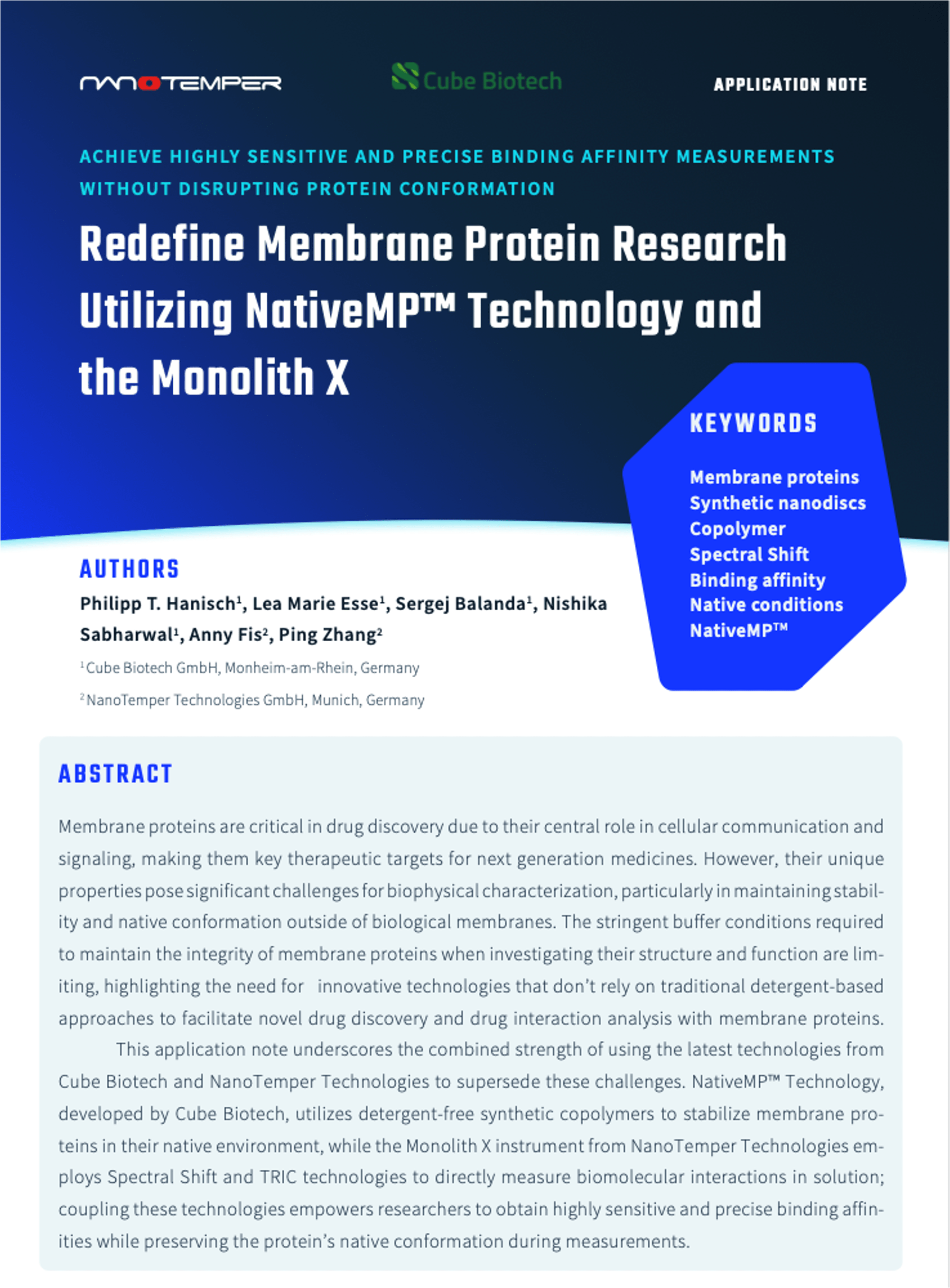nanoDSF, the miniaturized differential scanning fluorimetry technology, is a revolutionary method to determine the thermostability of proteins by following changes in their intrinsic fluorescence. In this comparative study, the Prometheus NT.48 was used to determine the thermal stability of the membrane esterase PA2949 from Pseudomonas aeruginosa in presence of various detergents. The detergent type strongly affected enzyme thermal stability, which moreover correlated with enzyme activity. Thus, the Prometheus NT.48 can be used not only to rapidly screen for optimal purification conditions for enzymes, but also to evaluate enzyme activities based on their conformational stability in presence of detergents.
Working with tricky membrane proteins?
NanoTemper tools can help
See more related content
 27:51
27:51Integration of Nantive MP and Monolith X enables accurate binding affinity analysis while preserving membrane protein structure and function.
 42:49
42:49In this webinar Dr. Melanie McDowell, Research Group Leader at the MPI of Biophysics outlines bottlenecks associated with membrane protein purification for cryo EM and strategies to overcome them

When working with membrane proteins, whether you’re troubleshooting aggregation, testing new solubilization strategies, or deciding when to switch detergents read this guide for practical solutions.
 53:00
53:00Explore a comprehensive, data-driven workflow—rooted in real-world results—combining the NativeMP platform with Prometheus Panta.
 43:09
43:09Learn about technologies and instruments that maintain membrane protein stability and allow structural abd affinity screening studies in their natural lipid environment.


Membrane proteins present challenges for structural analysis by cryo-EM; Screening of synthetic copolymers with nanoDSF and DLS on Prometheus Panta help select the best solubilization conditions.
To understand signaling pathways, Spectral Shift technology allows for accurate bindings affinity measurements of membrane proteins like GPCRs in close to native conditions.
The desire to use technology that allows you to study membrane proteins in close-to-native conditions is specifically important when it comes to interaction measurements. It’s always a question how mu
What you’ll learn It’s very common to experience low expression levels when producing membrane proteins — plus they’re finicky and unstable when they're outside of their native environment. Just know
Working with difficult targets like GPCRs and other membrane proteins? Because they live in the cell membrane, are hydrophobic and insoluble, have low expression levels, and require particular deter
Are you struggling to tame your mischievous membrane proteins? Find out how NanoTemper can help you to characterize even the most challenging membrane protein samples. You will learn how Prometheus ca

G protein-coupled receptors (GPCRs) are the largest class of targets for drug discovery, and the fourth largest superfamily in the human genome. They have been linked to the regulation of many...


